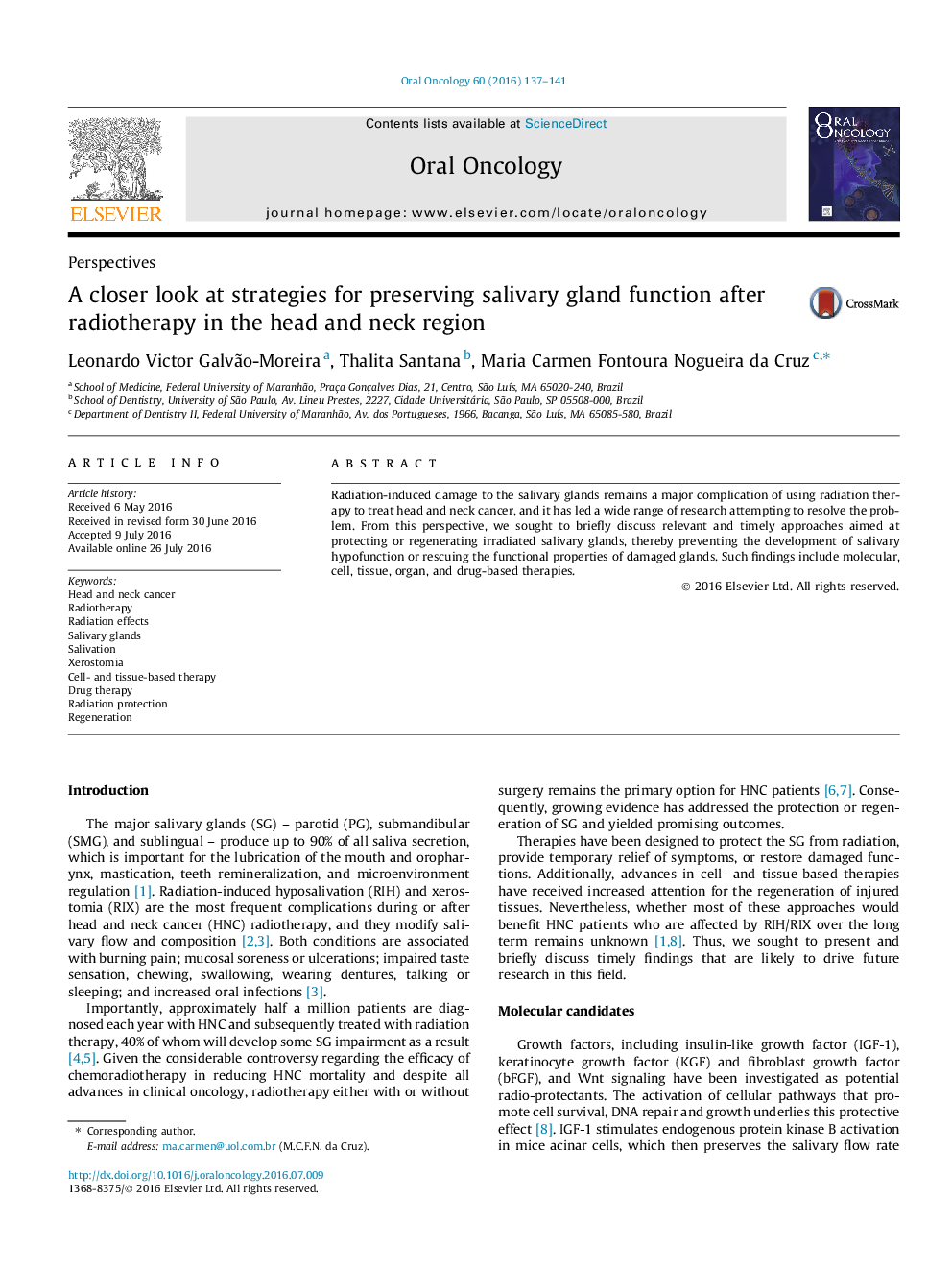| کد مقاله | کد نشریه | سال انتشار | مقاله انگلیسی | نسخه تمام متن |
|---|---|---|---|---|
| 6054611 | 1586250 | 2016 | 5 صفحه PDF | دانلود رایگان |
- Hyposalivation and xerostomia are frequent during or after HNC radiotherapy.
- Therapies aim to protect the salivary glands or restore damaged functions.
- Molecular, cell, tissue, organ, and drug-based therapies have emerged as potential approaches.
- Translational research has a crucial role in salivary research.
- Randomized clinical trials are necessary to confirm the efficacy of most strategies.
Radiation-induced damage to the salivary glands remains a major complication of using radiation therapy to treat head and neck cancer, and it has led a wide range of research attempting to resolve the problem. From this perspective, we sought to briefly discuss relevant and timely approaches aimed at protecting or regenerating irradiated salivary glands, thereby preventing the development of salivary hypofunction or rescuing the functional properties of damaged glands. Such findings include molecular, cell, tissue, organ, and drug-based therapies.
Journal: Oral Oncology - Volume 60, September 2016, Pages 137-141
